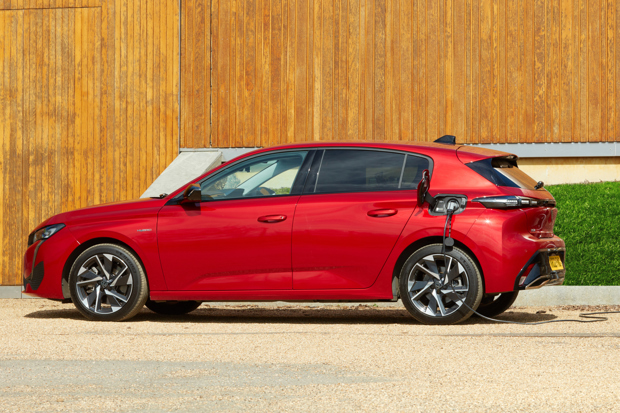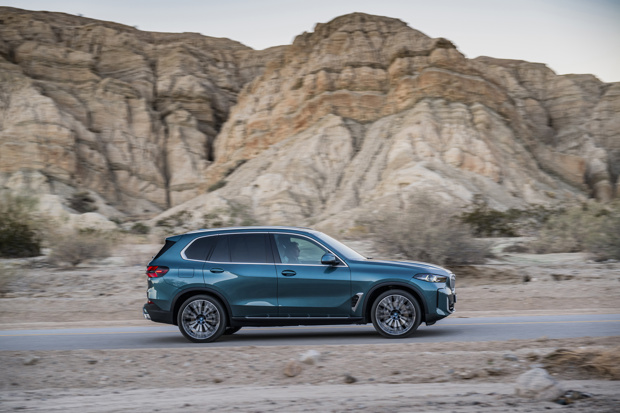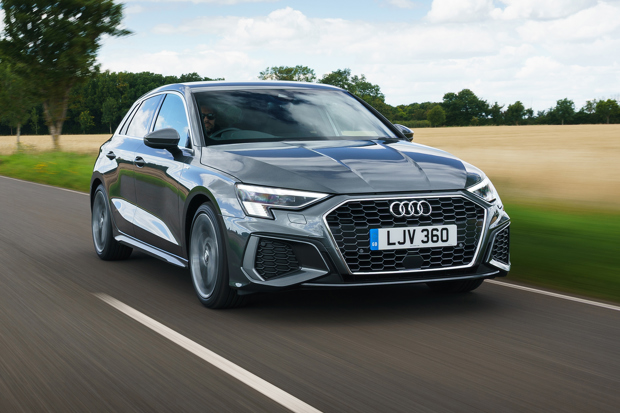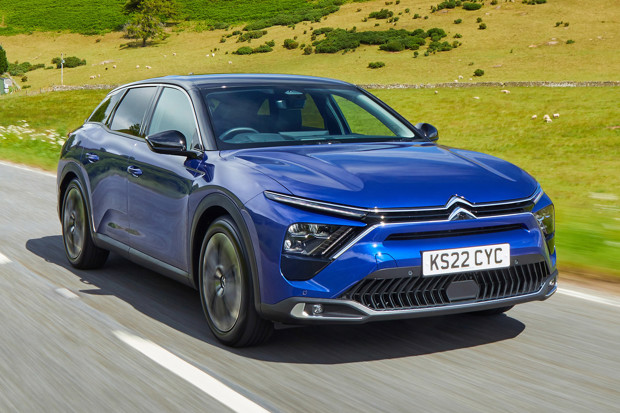Best plug-in hybrid cars 2025

If you like the idea of owning an electric car but you're not quite ready to say goodbye to a regular engine, a plug-in hybrid (PHEV) could be the answer. Some would argue that they offer the best of both worlds.
Today's crop of plug-in hybrids feature a petrol engine, electric motor and large battery. Unlike a 'self-charging' hybrid, which offers only a limited amount of electric range, a plug-in hybrid can be plugged in to recharge the battery (the clue's in the name), so you could find that you have enough range to complete your daily commute. When the battery's flat, simply recharge it using a home wallbox or via the public charging network.
It's not all good news. Plug-in hybrids are more expensive to buy than regular hybrids, and while they offer electric-only running and low CO2 emissions, the official fuel economy figures are only achievable if you remember to recharge the battery. If not, you're simply paying to carry a large and expensive battery pack.
If a plug-in hybrid works for you, here are 10 of the best you can buy right now.
Best plug-in hybrid cars
|

Mercedes C 300 e
The Mercedes C-Class is now available in C 300 e plug-in hybrid guise. It’s easily one of the most impressive PHEVs on sale. An ample 25.4kWh battery gives an eye-opening electric range of up to 70 miles in saloon guise or 66 miles in the estate. It’s this large battery that is behind the official 13g/km CO2 and 565mpg figures, too. The Mercedes has the ability to use 55kW rapid chargers, which fill it from flat in just 30 minutes. A 2.0-litre turbo engine is there to take over if you can’t easily recharge. We also like the tech-centric interior of the latest C-Class, and its confident, refined and soothing driving manners.

BMW 330e
The latest BMW 3 Series is a stylish car to look at, with one of the best interiors in the business. It has an abundance of desirability, particularly in plug-in hybrid 330e form. It uses a 12kWh battery to good effect, with 38 miles of electric-only running before the 2.0-litre turbo engine kicks in. With the engine and electric motor combined, and with the kick of a novel ‘XtraBoost’ function, total power output is an impressive 292PS, offering up 0-62mph in just 5.9 seconds. Company car drivers will love it for the low Benefit-in-Kind rates, but also for the way it drives. Even in plug-in hybrid guise, the latest BMW 3 Series is a proper sports saloon, with exceptional handling and driver-pleasing feedback.
.jpg?width=620)
Land Rover Defender P400e PHEV
The latest Land Rover Defender is proving to be a smash-hit success. Its design is achingly desirable and the interior is similarly noteworthy. It’s also super-spacious, particularly in 110 guise. What it hasn’t offered up until now is particularly impressive fuel-efficiency. The Defender P400e PHEV version fixes that. Adding a powerful electric motor to the 2.0-litre turbo engine boosts total power to 404PS, for a 0-62mph time of 5.6 seconds – it’s incredibly rapid for such a large 4x4. Yet the 19.2kWh battery provides up to 32 miles of electric range, plus official economy of 113mpg and CO2 emissions as low as 57g/km. It’s even able to use 50kW rapid chargers, topping the battery up in 30 minutes. It’s not hard to see why the plug-in hybrid Defender is in such high demand.

Lexus NX 450h+
The latest Lexus NX is a good-looking take on the Japanese premium theme, its appeal bolstered by a cultured cabin and vivid 14-inch touchscreen. It feels truly luxurious and certainly makes its mark alongside other mid-size SUVs. The NX 450h+ plug-in hybrid has a strong set of statistics, too: up to 40 miles of driving in pure electric mode, CO2 emissions as low as 21g/km, plus total system power of 309PS. The hybrid technology is cleverly integrated, so it doesn’t eat into passenger space, or compromise the roomy 545-litre boot. Owner satisfaction surveys suggest living with a Lexus is a pleasure, which only adds to the appeal of this impressive new plug-in hybrid.

Kia Sorento PHEV
The Kia Sorento is a large family SUV, with strikingly modern styling well beyond its ‘budget’ price tag. Its interior is also plush and comfortable, with acres of space for up to seven people. Bolting an electric motor to the 1.6-litre turbocharged engine gives a total output of 261PS, with standard all-wheel drive for driving confidence in all weathers. The plug-in hybrid system uses a generous 13.8kWh battery, delivering up to 35 miles of pure electric range. This helps reduce CO2 emissions to just 38g/km – music to the ears of company car drivers, who will also love the sheer value offered by this able Kia PHEV’s list prices.

Peugeot 308 Hybrid 180
Peugeot is so invested in plug-in hybrid tech that it’s given the latest 308 not one, but two PHEV options. While the more powerful 225PS model – the Hybrid 225 – has punchy performance, we prefer the Hybrid 180 model. It’s still got plenty of power at 180PS, but it’s more affordable and can manage up to 40 miles of electric-only running. If you run out of charge, there’s a 1.6-litre petrol engine available to take over. All this tech sits in a very stylish hatchback package, with a modern, classy cabin filled with generous levels of standard equipment. It’s not the most practical of hatchbacks, and taller passengers might find the rear seats a bit cramped, but if that’s not an issue for you then the 308 is highly recommended.

BMW X5 xDrive50e
The BMW X5 xDrive50e is a large plug-in hybrid SUV with an impressive set of stats. Equipped with a six-cylinder petrol engine and an electric motor, total power output is a hefty 489PS. A large battery also gives a 67-mile pure electric range and fuel economy of up to 313.9mpg. CO2 emissions from 18-21g/km bring significant tax savings, while the big BMW’s powerful appearance and high-quality cabin ensure plenty of subjective appeal. All-wheel-drive will prove a boon in winter, and BMW-honed handling makes the X5 particularly fun to drive.

Audi A3 TFSI e
The compact A3 TFSI e is currently Audi’s smallest plug-in hybrid car. With squat, muscular styling inspired by the original Audi Quattro, it’s a smart-looking machine, while the interior is high-tech, even if some of the famed Audi quality has been lost in this generation of A3. The 40 TFSI e is available in Sport or S-line trim, while the more powerful 45 TFSI e comes in well-equipped S-line Competition guise. In all cases, you can expect to see around 30 miles of electric range from a fully charged battery.
.jpg?width=620)
Volvo XC60 Recharge
Volvo revised the XC60 Recharge plug-in hybrid in 2022, boosting battery power and pure electric range. It can now do 47 miles in between charges, while offering an official 282mpg, with CO2 emissions as low as 23g/km. The 18.8kWh battery can be charged from flat in around five hours when using a home wallbox. If you’re less concerned about total range, performance is swift, with acceleration to 62mph in around five seconds in the T8 version. We also like the updated XC60’s infotainment system, which is now based on an ultra-flexible Google system.
Read our full Volvo XC60 review

Citroen C5 X
We're not quite sure if the C5 X is an estate car, an SUV, hatchback, saloon or coupe. Citroen argues that it's a blend of everything, and it's certainly one of the most interesting new cars on the market. It's also one of the most comfortable cars you can buy, thanks to Citroen's Advanced Comfort seats and suspension. You'd struggle to find a more comfortable car this side of a Range Rover or Mercedes S-Class. In plug-in hybrid mode, you can expect up to 39 miles of electric range, with EV mode available at speeds of up to 83mph.
What is the difference between a hybrid and a plug-in hybrid?
There is more than one type of hybrid. A regular or ‘self-charging’ hybrid has a limited electric-only range due to the smaller size of its batteries, which are recharged during braking. A plug-in hybrid has a far larger battery – often 10 times the size of a regular hybrid – to give a longer range for pure electric driving. However, as the name suggests, you have to plug it in when the battery goes flat, or you will effectively be driving a (heavier) pure petrol car.
Is a PHEV better than a hybrid?
If you are able to recharge at home every night, a plug-in hybrid is a great stepping stone to a pure electric car. If your daily driving can usually be completed in EV mode, it may demonstrate that an electric car works for you. Alternatively, it could just be a good weekday EV, with the petrol engine supporting longer weekend drives. A regular hybrid car doesn’t have this flexibility – although it does offer the advantage of never needing to be plugged in.
Which plug-in hybrid has the best range?
The Range Rover P440e has the highest electric-only range of new plug-in hybrids, with up to 70 miles, although it’s very expensive. Thanks to a particularly large battery, the Mercedes-Benz C 300 also impresses, with up to 70 miles of range available in the saloon version: almost as good as some older electric cars. The BMW X5 is also good, with 67 miles on a fully charged set of batteries.
Is it possible to convert a hybrid into a PHEV?

